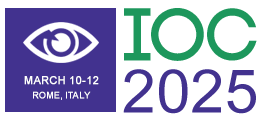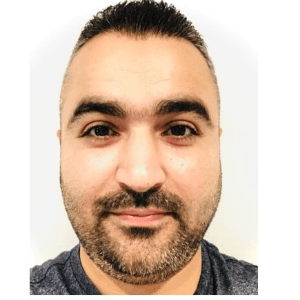Title : Navigating the storm ischaemic CRVO presenting as neovascular glaucoma
Abstract:
Introduction: This case study presents an elderly patient with a complex history of ocular conditions, including diabetic macular edema (DMO). The patient experienced significant complications leading to severe pain and vision loss, highlighting the challenges in diagnosing and managing neovascular glaucoma (NVG) secondary to ischemic central retinal vein occlusion (CRVO).
Case Presentation: An elderly patient was referred from optometry for high intraocular pressure (IOP) in the left eye (LE) (36 mmHg) and two days of eye pain. The LE vision got worse, being previously the better-seeing eye. The patient had a history of right eye (RE) chronic DMO, previously treated with a dexamethasone implant, which resulted in secondary ocular hypertension (OHT) managed with Brinzolamide. Initial examination revealed a poor view of the fundus due to significant hyperemia and a hazy cornea. No neovascularization on the iris (NVI) was visible. The patient reported having LE phacoemulsification a few months prior.
The initial impression was a steroid response leading to increased IOP. The patient was started on oral acetazolamide and dorzolamide/timolol eyedrops for the LE. Despite this, the IOP in the LE increased significantly (41 mmHg), prompting further investigation. On follow-up, ischemic CRVO and NVI in the LE were unmasked after treatment. The patient experienced an unwitnessed fall and developed acute kidney injury (AKI) due to dehydration, leading to admission. He had been using acetazolamide instead of the eyedrops whenever he had eye pain, overdosing because he felt that the drops were ineffective (squirting onto the nose, and into the ear, making him unsteady and causing falls).
Due to the fluctuating IOP, laser coagulation of the ciliary body was performed. Post-procedure, the LE showed an impressive reduction in IOP (16 mmHg). Panretinal photocoagulation was recommended, but the fundal view was obscured by inflammation, preventing the procedure. This necessitated hourly steroid therapy. An orbital floor depot injection of triamcinolone was administered to reduce the steroid drop burden upon discharge. Despite these interventions, the patient continued to experience pain and fluctuating eye discomfort, necessitating continuous management with glaucoma eyedrops and prednisolone.
Conclusion: This case underscores the importance of a comprehensive and multidisciplinary approach in managing complex ocular conditions. The rapid development of NVG following ischemic CRVO within two weeks and the difficulty in initial diagnosis due to corneal haziness highlight the diagnostic challenges. The case also illustrates the critical need for careful medication management and close monitoring to prevent complications in patients with cognitive issues and a lack of social support.
Audience Take Away Notes:
- Understanding the complexities involved in diagnosing NVG secondary to CRVO, especially when initial evaluation is obstructed by corneal haziness and hyperaemia, which can obscure critical diagnostic signs such as neovascularization.
- Recognising the critical need for careful medication management and monitoring to prevent unwanted complications, particularly in elderly patients with potential cognitive impairments and inadequate social support.
- Gaining insights into the treatment options for managing NVG secondary to ischemic CRVO, including the use of cyclodiode laser treatment, intravitreal injections, and intensive steroid therapy, along with their limitations and potential complications.



